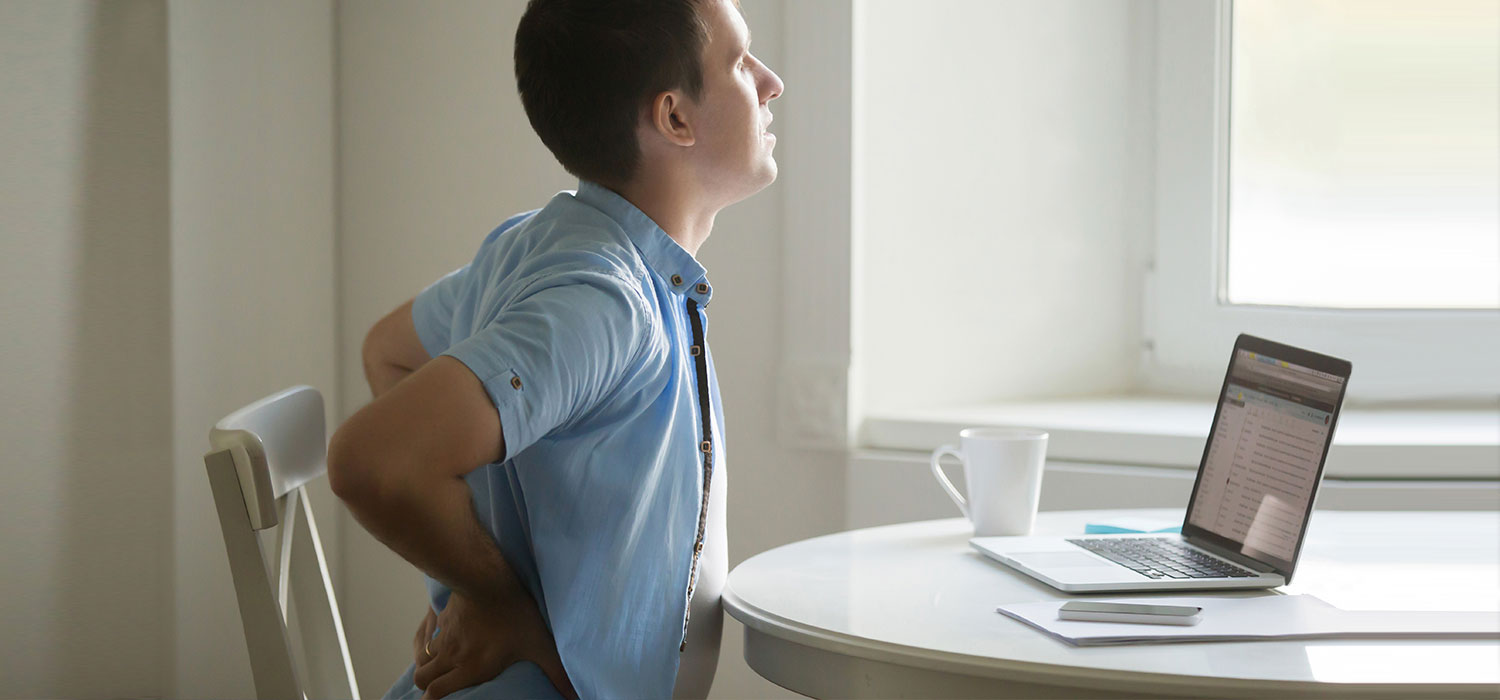
You may have heard about wearable devices that can nudge you into sitting up straight. But how well do they work, and can they really help alleviate your chronic back pain?
Back pain affects 60-80 percent of the U.S. adults, and undoubtedly poor posture contributes to the problem. Too many of us spend too many hours slouched at our desks and hunched over our phones. Tech companies are developing devices to try to nudge us to sit up straight.
The problem is there don’t seem to be any carefully controlled scientific studies of the effectiveness of these devices. Several journalists have tried them out and written reviews of them, generally reporting mixed results.
Here is a sampling of some of the devices on the market:
- AlignMed makes shirts and bras designed to strengthen and stretch underused muscles. The clothing uses what the company calls NeuroBand technology—"an anatomic matrix of elastomeric bands, panels and seams, built into comfortable, form-fitting garments.” According to one review, the fabric actually makes it difficult to slouch.
- The UPRIGHT GO is device about the size of a thumb that you attach to your back with adhesives. It contains a motion detector that vibrates when your using poor posture while sitting or standing. One reviewer called the device accurate and responsive.
- The Lumo Lift is a sensor about the size of your fingertip that you attach to your clothing near your collarbone. It tracks your posture and activity levels and vibrates when you slouch. According to one reviewer, it detected slouching about 80 percent of the time.
Until more scientific research is done on the devices, we can’t say for certain how well they work. What one person loves another may find ineffective or annoying. If you’re curious, give them a try. We’d love to hear about your results.
If you’d rather not invest in a posture-tracking device, you have other options.
- Spend a few sessions with a physical therapist who can help you strengthen your core muscles and become more aware of your posture. Practicing yoga or Pilates can also help improve your posture.
- If you spend your days at a desk, make sure your chair is adjusted correctly, your computer screen is at the correct height, and your keyboard and mouse are positioned ergonomically. You can find tips here. And don’t forget to get up and walk and stretch from time to time.
If chronic pain is keeping you from doing the things you want, schedule an appointment at Southwest Spine and Pain Center. With multiple locations across the state of Utah, the pain management specialists at Southwest Spine and Pain Center are dedicated to helping those who suffer from chronic pain live the life they want to. To schedule an appointment, visit our locations tab.
Southwest Spine & Pain Centers is the leading spine and pain management group in Utah. The physicians of this multi-location practice are dedicated to treating chronic pain and spine conditions using leading minimally invasive techniques and procedures. For more information, or to schedule an appointment click here, or call 435-656-2424.
The information in this article is for educational purposes only and is not intended to replace or counter a physician's advice or judgment. Please always consult your physician before taking any advice learned here or in any other educational medical material.
